Although horses are often seen as calm animals with little defense, they can also be dangerous. It’s not unusual for youngsters to have a fantasy of having a horse and often beg for one whenever they can. Horses are herbivorous prey animals, yet they are far from vulnerable in the face of a predator.
Horses are dangerous not because of their breed but because they get complacent and let their guard down. An adult horse might weigh anywhere from 930 to 2,000 pounds depending on the breed. Depending on the situation, powerful legs may be utilized by horses to attack or protect themselves. This already sounds threatening enough, and on top of it, horses can and do attack humans.
In the world of horses, no breed is more deadly than another. All horses can be equally hazardous. However, under particular settings and circumstances, certain horse breeds may be more likely to display violent behavior than others.
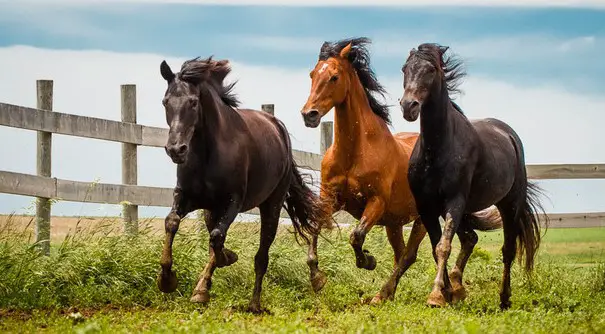
Here is a list of 5 potentially dangerous horse breeds that are not recommended for beginners.
1. The Wildest Horse Breed: Przewalski’s Horse
Przewalski’s horse, named after the Russian explorer N. M. Przewalski is the world’s only fully wild horse. “Wild” horses like mustangs in the United States derive from escaped domesticated horses that have adapted to live without direct human influences. There has never been a successful domestication attempt on the part of Przewalski’s horses.
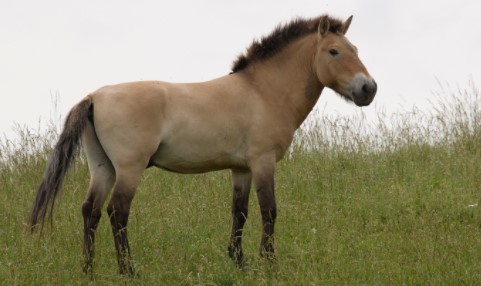
One of Mongolia’s most endangered species was almost extinguished until conservation efforts paid off. According to zoos and reserves, an estimated 2000 of these horses remained as of 2020. However, these horses are not extinct.
In contrast to tamed Mongolian horses, Takhi is not utilized for riding or exhibiting – maybe because it is a sacred animal in Mongolia, but the main reason is that they are too wild and refuse to be tamed.
Genetically, Przewalski’s horses differ from domesticated horses in many ways, including the number of chromosomes they have – 66, compared to the common horse chromosome number, i.e. 64.
2. Mustangs
The typical wild horses wandering wild in the western United States are known as mustangs. Native American populations today have bloodlines from a variety of different horse breeds and from Spanish colonial ancestors who brought them to the Americas centuries ago. In the 16th century, Spanish explorers brought the Iberian horses to this continent. These horses were mixed with other breeds, such as Quarter and Draft horses, to produce the breed we know today.
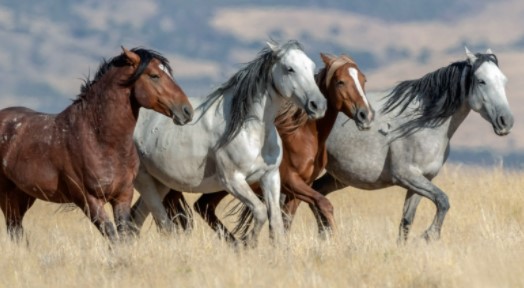
If caught, tamed, and taught adequately, wild mustangs may be turned into proper working or riding horses. However, if approached by humans in the wild, they might become hostile and inflict considerable bodily harm.
To sell mustangs in the past, you would have to trap and tame them. As a result of recent legislation, wild horses in the United States are now fully protected. The US Bureau of Land Management (BLM) protects and manages the wild mustang population that is rapidly becoming overcrowded.
3. Brumbies
You can see large herds of Brumbies in the Northern Territory and Queensland, where they wander free. Domestic horses that fled or were lost are descendants of the first European immigrants to arrive in the area.
Brumbies are considered pests in regions where they reside near human populations and may trespass in gardens, consume crops, etc., because of the estimated 400,000+ wandering wild in Australia.
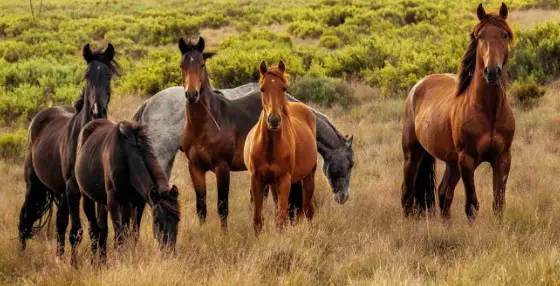
Domesticated brumbies, like mustangs, can accompany humans in many types of sports and recreation activities, but wild brumbies can still be hazardous to humans and other horses.
Humans and brumbies seem to have less hostile interactions than humans and mustangs, presumably due to the greater frequency of contact.
4. Arabian
Horseback riding on Arabian and Anglo-Arabian breeds is exhilarating. They are quick and have a “floating trot.” Working with Arabians is a joy since they are among the most intelligent horse breeds. These qualities are what make Arabians so attractive to skilled riders.
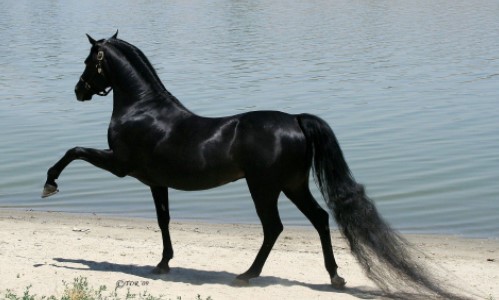
Not all horses will buck, rear, and bite at this point. But beginners will have a hard time. It’s common for an Arabian horse to find out if the rider on their back is incompetent and exploit it. An Arab may simply take a novice rider and drag it anywhere it wants to go, at whatever pace the animal chooses, without any constraints – a scenario in which no one would feel comfortable.
5. Akhal-Tekes
In the horse world, the Akhal-Teke is the guard dog. There’s no question about it: these creatures are loyal to a single owner. Even if they think they’re being threatened, they’ll strike back. Having one may be a wonderful experience if you are their owner, but if you are just a part-time companion, it might be frustrating.
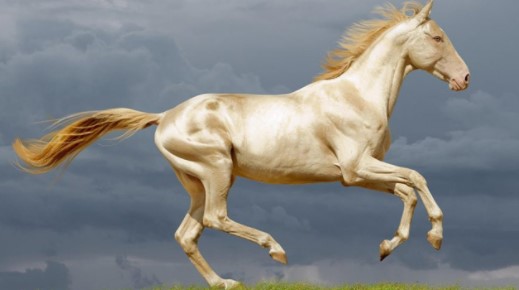
No, these creatures aren’t swayed by tricksters. These clever, elegant, and active horses only work with a person they trust and like. People who lack expertise with Akhal-Tekes will not only have a horrible experience with the horse but may end up traumatized.
Factors That Make a Horse Angry
It’s not common for horses to strike out or attack someone out of the blue. It’s easy to tell whether a horse is in a bad mood, has lost patience, or is afraid. People get into trouble when they don’t pay attention to the warning indications.
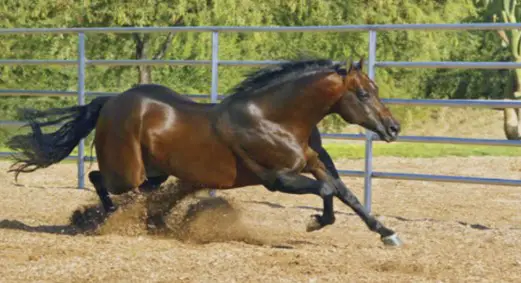
When a horse is afraid or desperate, they are more likely to become abrasive. Horses, even mild ones, have their distinctive triggers, such as seeing a vet’s needle or exposure to a trailer. However, horses in pain or are starving will also be more likely to engage in aggressive behavior.
Yes, horses are capable of running away at any moment. Shocking noises such as gunshots, bangs on the ground, and even lambs leaping out of their enclosures may make horses nervous. And this merely comes as a surprise – aggressive horses give precautionary signs before they engage in combative behavior. Here are some telltale indicators of an unhappy horse.
Supplies
The horse needs basic things such as shelter, food, and water. They will express their discontent if they lack or don’t have enough of these necessities.
Fear
Predators prey on horses, and so do humans. Fight or flight is their only choice when they feel threatened. Since they are physically capable of defending themselves, they are more than likely to do so.
Inadequate Instruction
The first thing horses do when they get food as a treat from a human is sniff in an attempt to find more food in humans near them. Once they’ve learned that humans carry food about, they’ll pounce on pockets and garments in an attempt to locate it.
Discomfort and Fear
In some cases, the lashing out of a horse indicates that something is wrong with the horse. They won’t be able to bear the discomfort of a saddle that doesn’t fit for long. They also kick at biting insects and fly on and around their torso and legs with their kicking motions.
Signs That a Horse Is Ready to Attack
Horses may display a variety of warning signals to let you know they’re about to attack, so here are some of the more common ones.
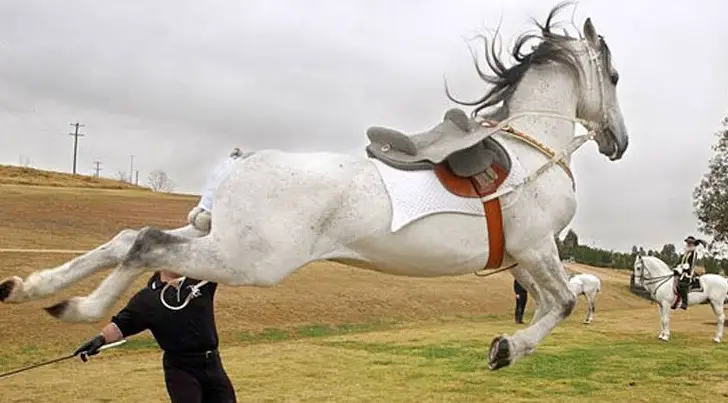
Ears
Turning the horse’s ears backward can inform you whether they are agitated. They will pin them if they’re extremely angry. Even cats and dogs show their anger by pinning their ears. Flattening the ears against the head reduces the risk of being ripped in a fight.
Like dogs and cats, horses move their ears to hear a sound better. A horse may turn its ears back to listen to its rider better, even if they are not angry at the moment. On the other hand, flattened ears may also indicate that the horse is agitated. It is a sign that the horse is ready to fight.
Biting
If you want to know what the horse intends to do, check out if it’s displaying its teeth and biting the air. That is, mimicking biting. If the horse bites you, it’s time to feel worried.
Horses, being prey animals, can see almost the whole perimeter of their bodies. Moreover, they would focus on what is troubling them. There are times when you may discover a horse staring at you with its whole body moving to maintain its attention on you. Proceed calmly and with caution and hope for the best.
Angling the Body
If a horse is angling its body behind toward you, that is the horse’s way of letting you know that you’re in for a nasty kick. An inexperienced rider may easily assume that a horse cannot simultaneously bend its behind toward a goal while still maintaining focus. Unfortunately, that is not true. Although horses have a wide field of vision, they can also bend their heads backward rather far. Also, they can kick forward, backward, and to the left or right.
Swiping of the Tail
To express anger, a horse will use a method of whipping the tail back and forth. This way it also alerts other horses that are near to back away. If a horse is doing this, be aware that a kick might follow in no time.
Frequently Asked Questions
1. What risk do horses pose to humans?
Certain horses may be a threat to people on specific occasions. To approach a herd of wild mustangs while riding a Thoroughbred stallion would be very risky, for example.
When learning to ride for the first time, it’s extremely important to choose a horse that meets your specific requirements in terms of breed, training, and temperament. Examples of horse breeds with a stable temperament include Friesian horses, American Quarter Horses, and Gypsy horses.
2. In horseback riding, what is the most dangerous style?
Horse jump racing is the most hazardous kind of horseback riding.
Horses can traverse a series of natural or man-made obstacles carrying their riders at great speed. The dangers for both the horses and the contestants are significant, with certain races consistently resulting in a high number of injuries and deaths.
The Velka Pardubicka, or “Devil’s Race,” is the most hazardous horse race in the world. The event, which began in Pardubice, Czech Republic, in 1874, had more than 31 obstacles over a distance of more than 6.9 kilometers.
It is estimated that more than 24 horses have lost their lives while attempting to clear the famed “Taxis Ditch” barrier since the race’s inception.
3. Can riding a horse kill you?
Like most other activities, riding a horse comes with certain inherent dangers. Yes, riding a horse has the potential to result in your death. But certain equestrian activities pose a greater risk than others. For the most part, horseback riding has the same level of risk as cycling or downhill skiing and is less risky than many sports mentioned above. Horse racing, including jumps, carries a much higher level of danger. Horse riding has a higher-than-average risk of major injuries and hospitalizations, compared to other activities, despite the low total injury incidence. In a study of typical children’s injuries, children who had car accidents had a more serious injury severity score than those who suffered in horseback riding.
Equestrian accidents sometimes result in fatalities due to severe head trauma. Horseback riding is responsible for more than 100 deaths in the United States each year, with 10-20 times more head injuries than fatalities. Horseback riders who wear helmets are less likely to suffer head injuries and fatalities. The Pony Club of the United States saw a 60% drop in head injuries after requiring all participants on horseback to wear helmets that were attached correctly and certified by the organization.
4. What are the dangers of horseback riding?
Equestrian sports, including horseback riding, may be hazardous for various reasons.
First and foremost, horses are massive and powerful animals almost seven times as powerful as humans. Even when the kick, bite, or head-swing of a horse is accidental, it may, nevertheless, have a serious impact on the person injured.
Another factor that increases the severity of a kick is that most horses wear metal shoes that are sturdy and heavy, therefore, dangerous.
The third reason is that while riding a horse, you are at a high altitude above the ground, and you are at risk of falling if the animal missteps or suddenly tosses you. Falling from a great height during any activity may result in catastrophic bodily damage.
Horses may reach speeds of up to 40 mph, making any fall from their back seriously brutal and dangerous.
Conclusion
As herbivorous prey animals, horses are huge and strong enough to defend themselves, their young, or their resources if they feel threatened.
People have bred the most dangerous horses in modern society to be very fast, energetic, and powerful. However, any horse can become aggressive.
Feral horses in the wild are not familiar with human contact and may become violent if people approach them too closely. To avoid harm or death, make sure you remain at a safe distance. Domestic horses, particularly those of the hot-blooded kind, need rigorous and constant training and exercise to establish clear limits, burn off surplus energy, and avoid undesirable habits.
Also, check out our detailed guide on Native American Horse Breeds
